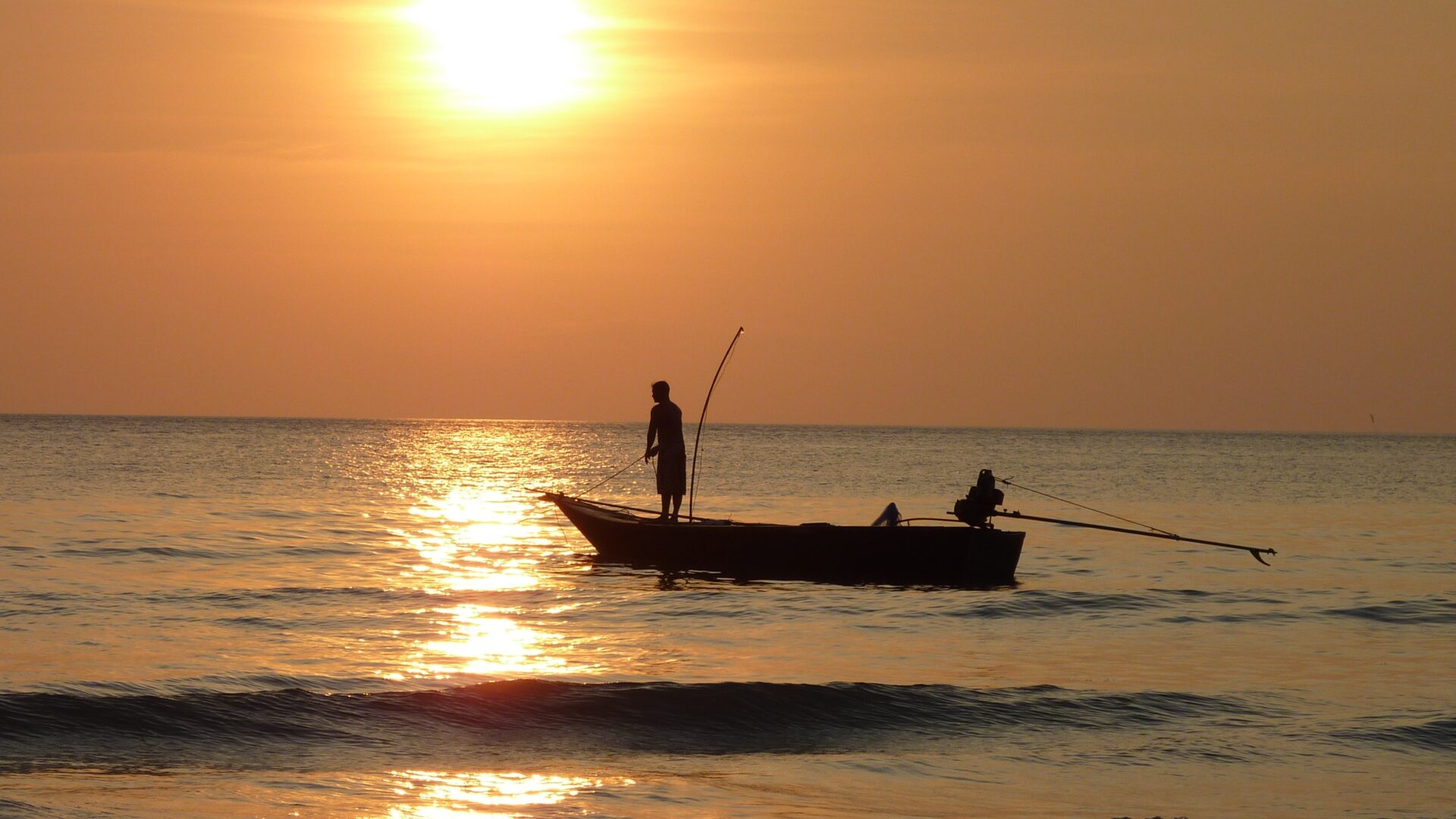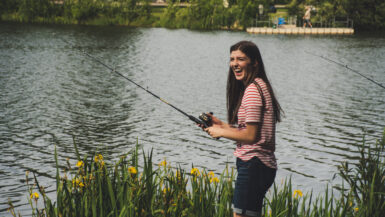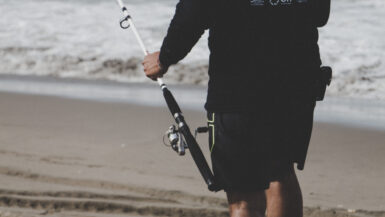Catfish are a popular fish for many anglers. While most anglers focus on larger bodies of water, catfish can also be found in ponds and can provide an enjoyable experience for hobbyists or seasoned veterans alike. Knowing the best baits for catching catfish in ponds is key for a successful day out on the water. In this article, we’ll explore several of the top baits to use when targeting catfish in these smaller bodies of fresh water.
Types of Catfish
Catfish can be found in almost every pond, and they’re an angler’s favorite game fish. However, they can be tough to catch if you don’t know what bait to use. Knowing the best baits for catching catfish in ponds is essential to a successful fishing trip. Here, we’ll discuss the types of catfish, their preferred baits, and the best techniques for catching them.
Common Types of Catfish
There are many different types of catfish that can be found in ponds, including channel catfish, blue catfish, flathead catfish, and bullhead catfish. Channel catfish are typically the most common and also the easiest to catch. They have a distinctive forked tail and can grow to nearly 2 feet in length. Blue catfish are the next most common and are identified by their deep blue-gray color. Flathead catfish are the largest species, growing up to lengths of 4 feet and heavier weights of 60 pounds. Bullhead catfish are the smallest species, rarely growing to more than 12 inches.
Preferred Catfish Baits
The best baits for catching catfish in ponds vary depending on which species of catfish you’re targeting. Generally speaking, live bait such as nightcrawlers, minnows, earthworms, and crayfish are the best options. Channel catfish are attracted to baits like chicken livers and cut bait, while blue catfish prefer large shad or skipjack herring. Flathead catfish are the most opportunistic feeders and will take almost anything, including live bait, cut bait, and even smaller fish. Bullhead catfish are scavengers and will eat almost anything from dead minnows to doughballs.
Best Techniques for Catching Catfish
Once you’ve chosen the right bait for the job, it’s time to focus on the technique. When fishing for catfish in ponds, it’s important to keep your movements to a minimum. If your bait starts to float, it may look unnatural to the fish, so make sure to refresh it every few minutes. If you’re using larger live bait, consider using a slip-float rig. This will help keep your bait in the right spot and away from any surface interference.
Once you’ve set up your bait and started fishing, be sure to give the catfish time to take the bait. Catfish can be slow to bite, so patience is key! With the right bait and technique, you can have a successful day of catfishing at your local pond.
Appropriate Bait for Pond Catfish
Fishing is an enjoyable activity for many, especially when there are plenty of catfish in the pond to be caught. Catfish can be found in virtually every body of water, including ponds and lakes. Knowing what the best bait for catfish in ponds is can be a helpful tool when fishing.
Types of Bait Suggested for Catch Catfish in Ponds
Shrimp, crayfish, worms, and stink bait are excellent options for catching catfish in ponds. Shrimp has been proven to be one of the best baits for catfish, as they can smell it from a distance, especially when it is cut bait. Crayfish are also great bait for catfish in ponds, as they can be found in the same waters. Worms are also an effective bait for catfish because they wiggle in the water, which attracts them to the bait. Stink bait is also effective for catching catfish, as their keen sense of smell will lead them directly to the bait.
Tips for Choosing Appropriate Bait for Pond Catfish
It is important to choose the right bait for pond catfish, as some of the baits suggested can be more beneficial for certain species of catfish than others. The type of bait used will depend on the type of catfish in the pond. For instance, if the pond contains Channel catfish, dead bait might be the best option. However, if the pond contains Blue or Flathead catfish, live bait or artificial lures are better choices.
Additionally, catfish tend to feed more actively during certain times of the day and night. Therefore, in order to be successful fishing for catfish in the pond, it is important to fish during the right times. Generally, catfish tend to feed most actively at dawn and dusk, so this is the best time to try and catch them.
Conclusion
When fishing for catfish in ponds, it is important to choose the right bait for the situation. Shrimp, crayfish, worms, and stink bait are all excellent options for catching catfish in ponds. It is also essential to determine the type of catfish in the pond to know what the most suitable bait is, as the type of bait used will depend on the species of catfish. Additionally, it is important to fish at the right times, such as at dawn and dusk, to make the best of the catfish feeding activity. With the right bait and timing, catching catfish in ponds can be an enjoyable experience.
Factors to Consider Before Choosing Bait
When choosing bait for catching catfish in ponds, the location should be taken into consideration. Catfish can be found in different depths and areas of ponds, so it’s important to think about how and where you plan to fish. Are you fishing from a dock or from shore? Are you fishing in shallow or deep water? These are all factors to consider when selecting bait.
Types of Bait
There are a variety of baits that can be used to catch catfish in ponds. Common types of bait include worms, night crawlers, crayfish, shrimp, and various canned baits. When selecting bait, it’s important to consider the size of the bait, as well as the type of catfish you intend to catch. Some types of bait will be more effective for certain types of catfish.
Size of Bait
The size of bait you choose can also have an impact on your success when fishing for catfish in ponds. The size of the bait should be appropriate for the size of the catfish you plan to catch. Smaller baits work best for smaller catfish, while larger baits may produce better results when targeting larger catfish. When in doubt, it’s best to use a variety of sizes to see which one works best.
Presentation of Bait
It’s also important to consider how you present the bait to the catfish. Some anglers prefer to thread the bait onto a hook, while others prefer to simply drop the bait into the water and let it sink to the bottom. Experiment with different presentations to see what works best in the pond you are fishing in.
Time of Day
The time of day can also be a factor when selecting bait for catching catfish in ponds. Catfish tend to feed most actively at dusk and dawn, so the bait you choose should reflect this. Live bait is often the most effective when fishing for catfish during these times, as it is more likely to attract the attention of the catfish.
Scent
Scent can also be an important factor when selecting bait for catching catfish in ponds. Live bait and certain types of canned bait have strong scents that will attract catfish. Experiment with different scents to see which one works best in the pond you are fishing in.
Experimentation
Experimentation is key when it comes to selecting the best bait for catching catfish in ponds. Try different types, sizes, and presentations of bait to see which one works best in the pond you are fishing in. Keeping a diary of your results can help you determine which bait is most effective for catfish in your particular pond.
Preparing the Bait
Catfish are scavengers, meaning they will eat almost anything that is available in their natural habitats. Baits of various types can be used to attract catfish from a pond or larger body of water. Popular bait types include worms, minnows, crawfish, crustaceans, and prepared artificial baits.
Choosing the Best Bait for Your Location
The best bait to use for catching catfish in your particular pond will depend on the type of catfish in the area and the food sources available. For example, if the pond is home to a variety of catfish species, you may want to use a combination of baits to see what type they prefer. It is best to research the type of catfish in the pond and the type of bait that works best for that species. Additionally, it is important to consider the size and type of bait you are using and the size of the catfish in order to choose the best option for your setup.
Creating Your Own DIY Catfish Bait
Creating your own homemade bait can be an effective and affordable way to attract catfish in ponds. Preparing homemade baits requires gathering ingredients that catfish feed on in nature. This may include items such as shrimp, earthworms, chicken liver, anchovy paste, and canned tuna. You can mix these ingredients together to create your own bait blend and even add additional flavors such as garlic or chili powder to make your bait more attractive.
Packaging the DIY Bait
Once you have created your own homemade bait, it needs to be properly packaged in order to be used in your fishing setup. You can purchase special rigs and tools that allow you to package the bait in a way that will make it easier to cast and attract the catfish. Additionally, it is important to use the right type of hook when packaging your bait, as not all hooks are designed to hold the bait in place.
Positioning the Bait for Success
When using any type of bait to attract catfish in ponds, it is important to position the bait in such a way that it will be most attractive to the catfish. This means finding the area of the pond where catfish are likely to feed and placing the bait in that vicinity. Additionally, you should ensure that the bait is suspended just above the bottom of the pond to ensure that the catfish can find it easily. Finally, experiment with different bait and hook combinations until you find the one that works best for your location.
Techniques for Casting the Bait
Catfish are one of the most popular freshwater game fish, and they can be found in ponds across the country. The best baits for catching catfish in ponds vary depending on the species of catfish that you’re after, but generally speaking, good baits include worms, crawfish, shrimp, and other stinky, fatty fish.
Setting Up Your Rig
Before you can start casting your bait, you’ll need to rig up your fishing pole. You’ll want to use a six to eight-foot rod that can handle up to eight-pound test line. Attach a heavy-duty swivel to the end of your line, and then tie a sinker and a hook. The sinker helps keep your bait at the bottom of the pond where the catfish are more likely to be, and the hook helps keep your bait in place.
Casting for Catfish in Ponds
Once your rig is set up, you’re ready to start casting your bait. Casting for catfish in ponds requires some finesse, as the depth of the water can vary from pond to pond. Try to keep your bait within three to four feet of the bottom, and cast as far out as you can. It’s also a good idea to use a bobber so you can keep track of your bait.
The Best Casting Techniques for Catfish
When it comes to casting for catfish in ponds, the biggest tip is to use a slow and steady technique. You don’t want to cast too quickly, as this could cause your bait to fly off the hook. Instead, cast slowly and steadily, ensuring that your bait lands right where you want it. Also, be sure to give your bait some time to sit on the bottom before you retrieve it. Catfish are ambush predators, so they’re more likely to bite if they’re given some time to investigate your bait.
Conclusion
Fishing for catfish in ponds can be a fun and rewarding experience, especially if you use the right baits and casting techniques. Be sure to use a slow and steady casting technique, and give your bait some time to sit on the bottom. With the proper bait and techniques, you’ll be able to catch plenty of catfish in your local pond.
The Benefits of Using Frozen Bait
Catching catfish in ponds can be an enjoyable and rewarding experience, but the key is having the right bait. Many anglers turn to frozen bait to increase their chances of success. This type of bait stays fresh longer, is easier to cast, and can be more effective at attracting catfish than live bait.
Advantages of Frozen Bait for Pond Fishing
Frozen bait is a popular choice for many anglers because of the advantages it offers. This type of bait stays fresh longer since it is preserved and doesn’t spoil as quickly. Additionally, frozen bait casts better and further than live bait, making it easier to reach catfish hiding in deeper waters. Frozen bait can also be more attractive to catfish because it is prepared in a variety of flavors and textures, which can make it more appealing than live bait.
Easy to Purchase and Store Frozen Bait
Another advantage of using frozen bait is that it is easy to purchase and store. It can usually be found in most tackle stores and can be stored in a freezer at home, allowing anglers to keep a supply of bait on hand. This eliminates the need to purchase live bait and makes it possible to fish without worrying about bait running out during the day.
High Quality Frozen Bait for Catching Catfish
For anglers looking for the best results, high quality frozen bait is best for catching catfish in ponds. Premium frozen bait is prepared with specific flavors, scents, and textures that can be more attractive to catfish than generic, store-bought bait. Additionally, this type of bait is often prepared in smaller portions that make it easier to cast accurately and reach the intended target.
Tips for Selecting Frozen Baits for Catfish
When selecting frozen bait, it is important to choose baits that are designed for catching catfish. Some baits are specifically formulated to attract and hold the attention of catfish, while others are designed to be more effective at reaching deep waters. Additionally, anglers should experiment with different flavors and scents to find the most effective bait for the given fishing conditions.
Successful Tips for Catching Catfish
Using the correct bait is a key factor for successful catfishing. Whether you are fishing in a lake, river, or pond, the baits listed above can be used to catch catfish in any environment. It is important to use a variety of baits, to find out which bait works best. In addition, fishing around structure, along the shoreline, and in deeper areas can be beneficial in increasing catfish catches. By trying different techniques, it is possible to better understand the behavior of catfish and increase your chances of success. With the right knowledge, patience, and the correct bait, you can be sure to have a successful catfishing trip.





Leave a reply